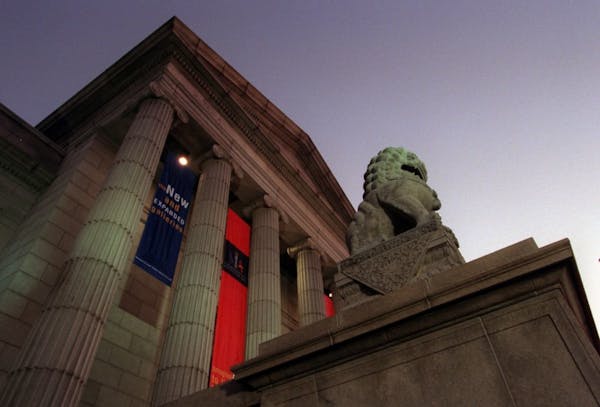Clinton Morrison: Donated his 10-acre family estate, Villa Rosa, as site for the museum and art school on condition that $500,000 be raised for the buildings.
Florence Welles Carpenter: A member of the museum's board, she persuaded her brother-in-law, lumberman Eugene Carpenter, to head the 1910 building-fund drive "because it was a man's job."
William Hood Dunwoody, president of Washburn Crosby flour company, gave $100,000 to kick off the building fund and, in 1914, bequeathed $1 million to buy art.
James J. Hill: Ignoring inter-city rivalries, the St. Paul railroad builder loaned important paintings to the opening show and later gave them to the museum, urging it to "make your standard high and live to it."
Russell Plimpton: The museum's longest-serving director (1921-56) introduced modern art (Braque, Matisse and Picasso in 1923), built audiences, and secured key gifts of archaic Chinese jade, bronze and porcelain from Alfred Pillsbury, American silver from James Ford Bell and Chinese decorative arts and jade from Augustus Searle.
Richard S. Davis: Controversial curator (1946-1955) and director (1956-1959) who promoted modern art and staged brilliant shows but sullied the museum's reputation by selling off then-unfashionable art including a Canaletto landscape that New York's Metropolitan Museum snapped up. Scandalized, the museum board hired a businessman to oversee operations, prompting Davis' resignation. Museums elsewhere followed suit in curbing director's powers.
Bruce Dayton: The museum's longest serving board member (1942-present) and greatest benefactor, he has donated more than $75 million and given 2,000-plus works of art ranging from galleries of Chinese furniture and sculpture to 18th-20th century French paintings and an American Indian-painted elk hide.
Kaywin Feldman: Hired in 2008, the museum's first female director and president has reorganized staff, hired 10 new curators, and negotiated the acquisition of a $25 million collection of Japanese art.
